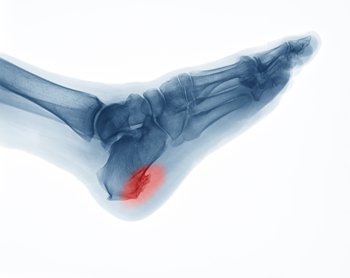Dallas Metro / North Texas
(214) 710-1028
Facts About Heel Spurs
Tuesday, 21 June 2022 00:00
You may not know that a heel spur is developing until it is causing considerable pain. Known medically as a calcaneal spur, this calcium growth forms around the tendons and ligaments of the foot where they connect with the calcaneus, or heel bone. When you put weight on your heel, especially after a rest, the pain can be excruciating. It has been described as having a “toothache in the foot.” Ironically, the more you walk, the less painful it may become as the nerves and capillaries adjust to the motion. Calcaneal spurs are more common in adults over 40. They are also common among people with osteoarthritis, rheumatoid arthritis, or poor blood circulation. A podiatrist can offer a wide variety of treatments that may include ultrasound therapy, custom orthotics, and in severe cases, surgery. If you believe you have developed a heel spur, it is a good idea to make an appointment with your podiatrist.
Heel spurs can be incredibly painful and sometimes may make you unable to participate in physical activities. To get medical care for your heel spurs, contact Kellvan Cheng, DPM from Elite Foot & Ankle. Our doctor will do everything possible to treat your condition.
Heels Spurs
Heel spurs are formed by calcium deposits on the back of the foot where the heel is. This can also be caused by small fragments of bone breaking off one section of the foot, attaching onto the back of the foot. Heel spurs can also be bone growth on the back of the foot and may grow in the direction of the arch of the foot.
Older individuals usually suffer from heel spurs and pain sometimes intensifies with age. One of the main condition's spurs are related to is plantar fasciitis.
Pain
The pain associated with spurs is often because of weight placed on the feet. When someone is walking, their entire weight is concentrated on the feet. Bone spurs then have the tendency to affect other bones and tissues around the foot. As the pain continues, the feet will become tender and sensitive over time.
Treatments
There are many ways to treat heel spurs. If one is suffering from heel spurs in conjunction with pain, there are several methods for healing. Medication, surgery, and herbal care are some options.
If you have any questions feel free to contact our office located in Carrollton, TX . We offer the latest in diagnostic and treatment technology to meet your needs.




